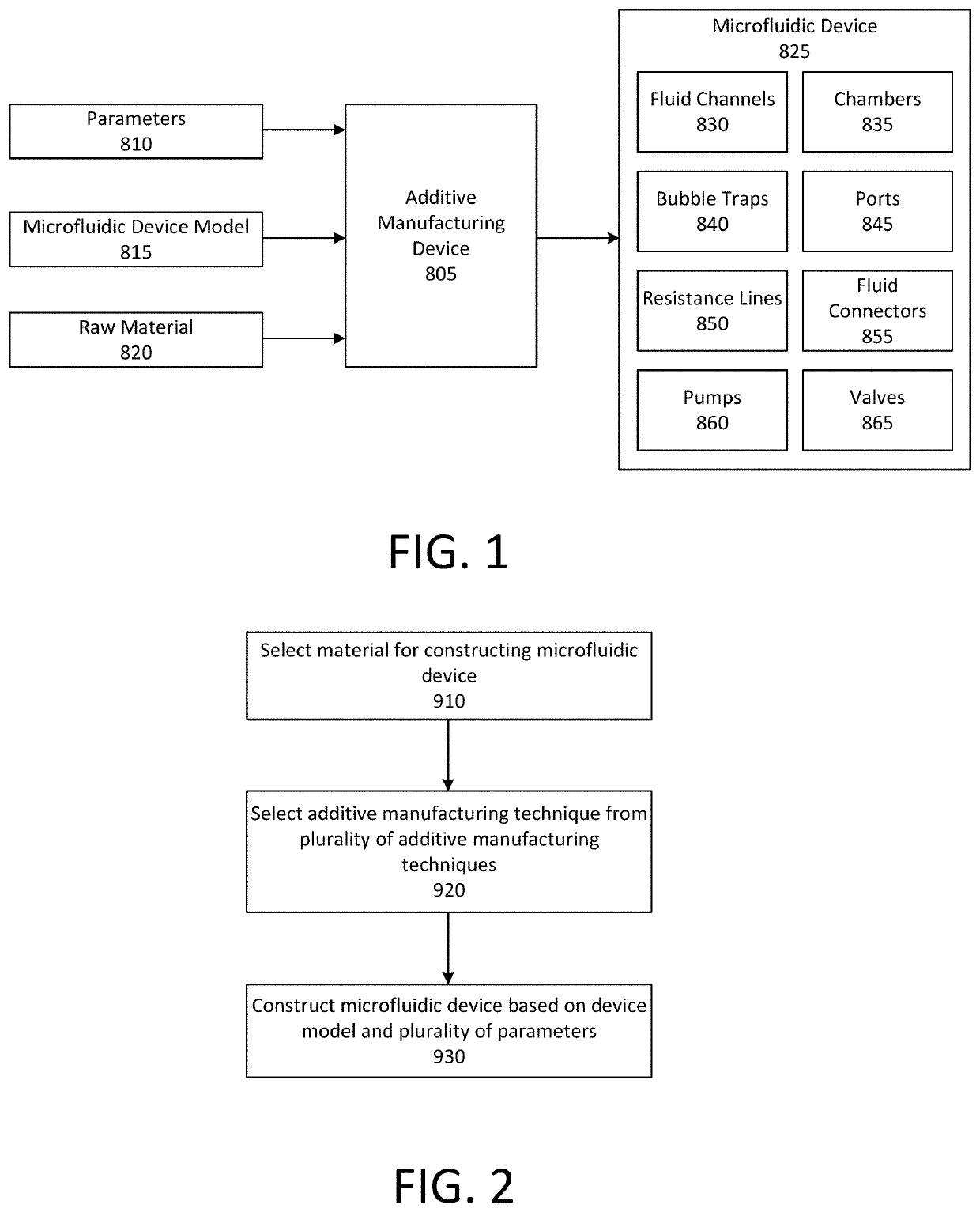Systems and methods for fabricating microfluidic devices
a technology of microfluidic devices and systems, applied in the field of systems and methods for fabricating microfluidic devices, can solve the problems of complex devices that are unfavorable or difficult to implement by other means of manufacturing, and achieve the effects of reducing manufacturing costs, simplifying the overall development of microfluidic devices, and increasing process yields
- Summary
- Abstract
- Description
- Claims
- Application Information
AI Technical Summary
Benefits of technology
Problems solved by technology
Method used
Image
Examples
Embodiment Construction
[0023]Additive manufacturing (AM), i.e., the layer-by-layer creation of solid objects, using as a template, a computer-aided design (CAD) file, is a promising approach for implementing microfluidic systems. Accessibility of printing technologies and availability of printable materials that exhibit diverse mechanical, chemical, and optical properties make AM practical for many applications and user-experience levels. In addition to greater flexibility in the types of component geometries that can be created, AM simplifies the overall development of microfluidic devices and increases process yields. The potential for monolithic construction of a 3D-printed microfluidic device eliminates the need for subsequent adhesion or bonding processes, improving the consistency of its manufacturing by eliminating the need for alignment and by limiting operator involvement and potentially error in the fabrication. The true 3D capabilities also permit curved fluidic transitions and minimized dead v...
PUM
| Property | Measurement | Unit |
|---|---|---|
| thickness | aaaaa | aaaaa |
| thickness | aaaaa | aaaaa |
| width | aaaaa | aaaaa |
Abstract
Description
Claims
Application Information
 Login to View More
Login to View More - R&D
- Intellectual Property
- Life Sciences
- Materials
- Tech Scout
- Unparalleled Data Quality
- Higher Quality Content
- 60% Fewer Hallucinations
Browse by: Latest US Patents, China's latest patents, Technical Efficacy Thesaurus, Application Domain, Technology Topic, Popular Technical Reports.
© 2025 PatSnap. All rights reserved.Legal|Privacy policy|Modern Slavery Act Transparency Statement|Sitemap|About US| Contact US: help@patsnap.com



